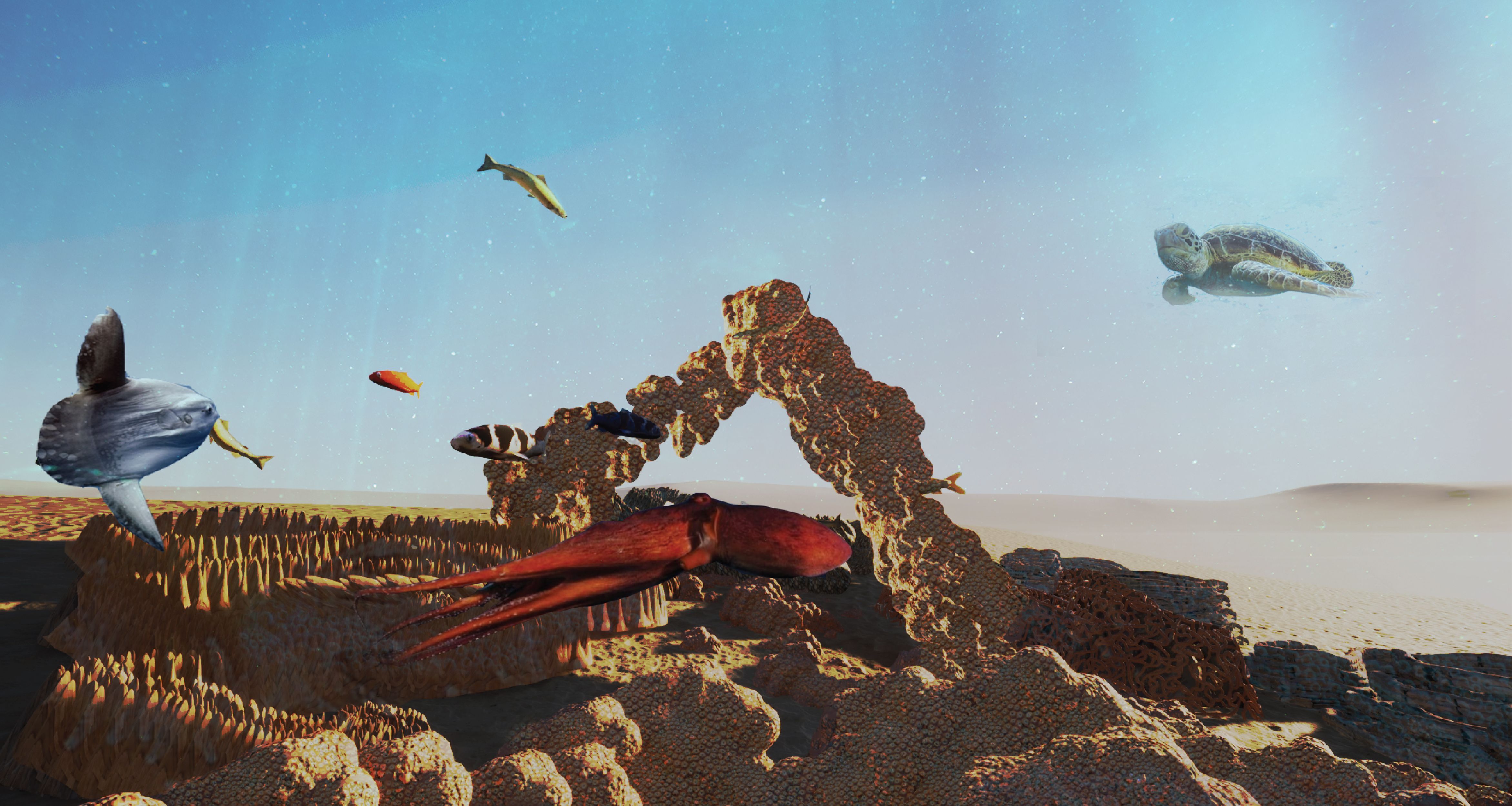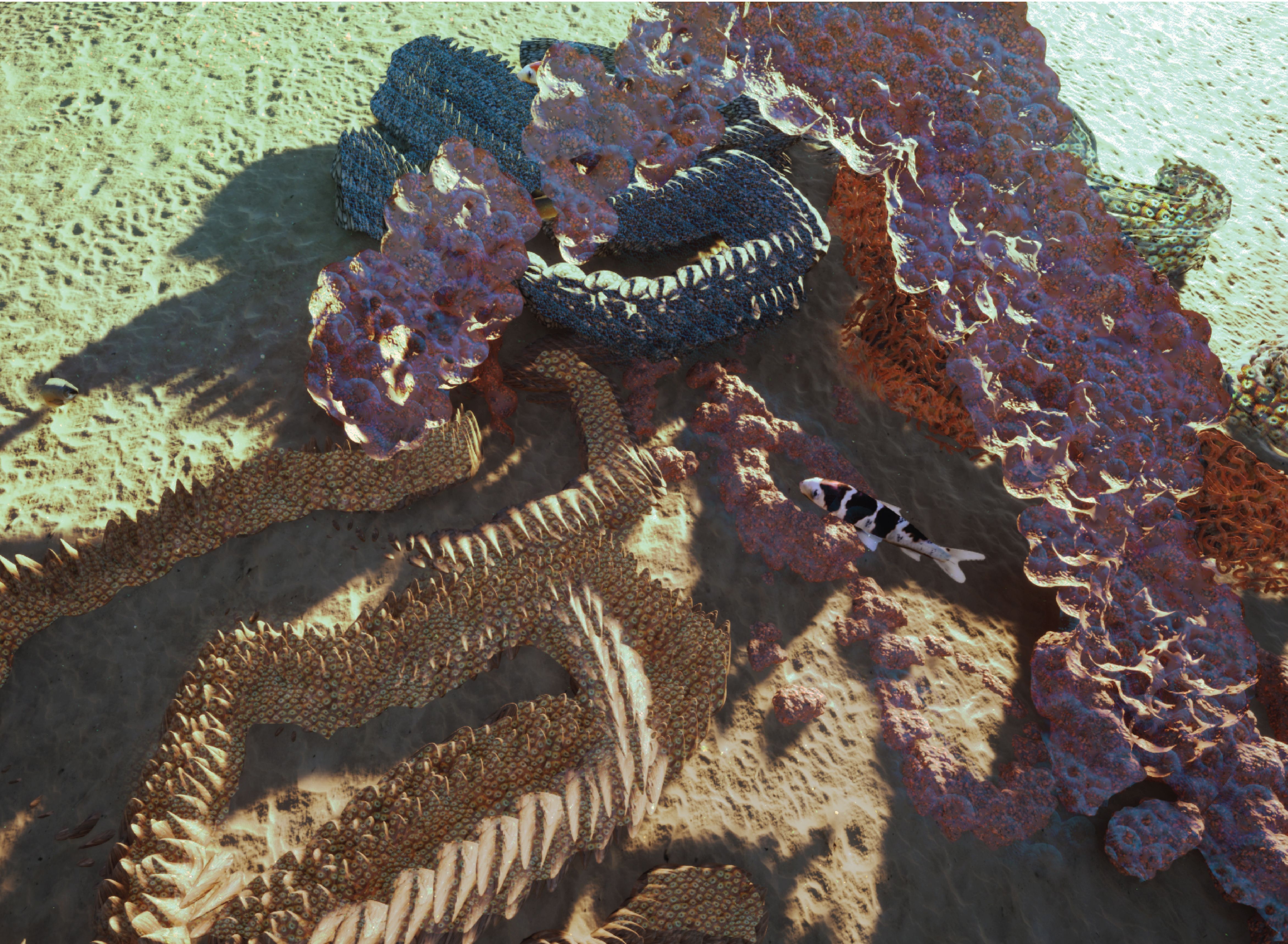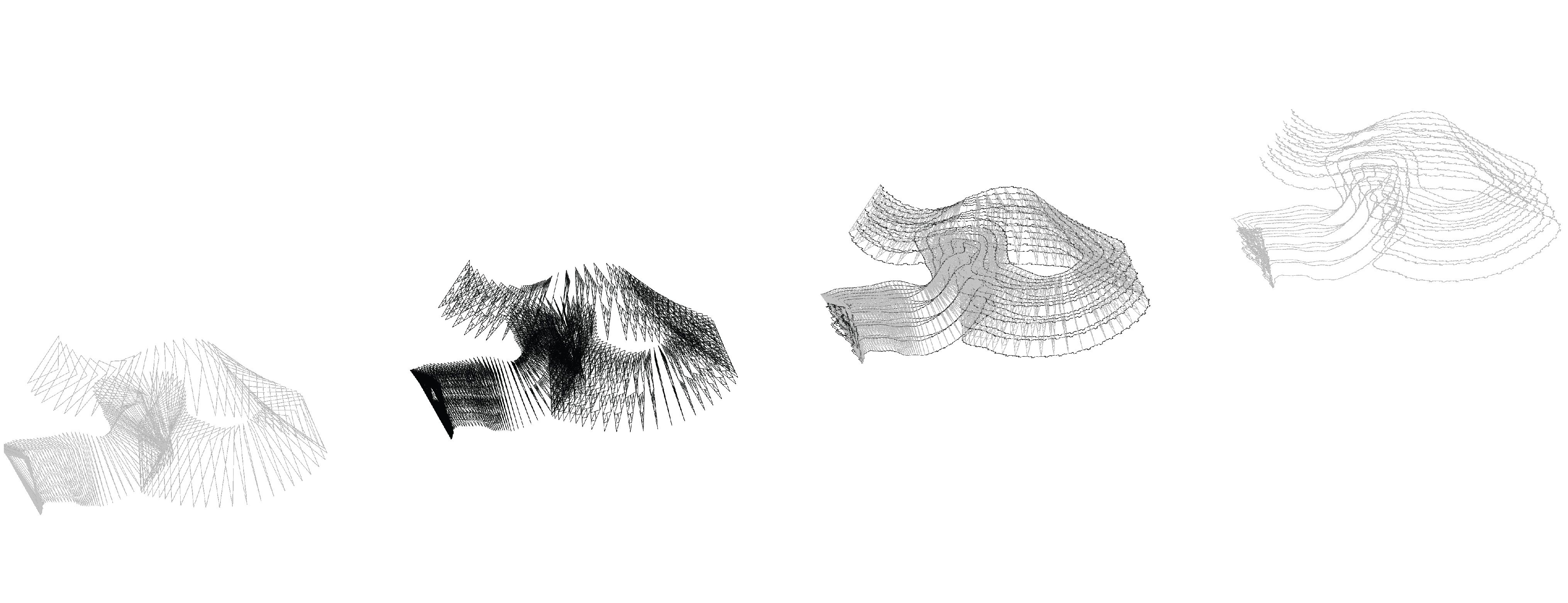A Humble Abode
Diverse Coral Structures and Growth Patterns

Coral reefs are known as the “rainforests of the sea,” creating healthy ecosystems for aquatic life. These structures, themselves in symbiosis with other fish and algae, are remarkable in their morphologies, and are an example of diverse habitat structures that support vitality and resilience amongst inhabitants in an environment.
Inspired by how seemingly simple polyp structures grow in a variety of patterns to eventually form an entire spectrum of massive coral structures, we sought to do the same in the 3D modeling environment using Grasshopper and C#.
We first recorded a walking pattern using HTC Vive Controllers, which was imported into Rhino as a series of planes. The curve that connects the origins of these planes forms the parent branch of the coral. We then wrote code defining several growth patterns to model different coral typologies. Coral 1 used fractal lines to form a spiral geometry; Coral 2 strung together a base polyp module; Coral 3 used sorted points and mesh geometry; and Coral 4 created a branching effect using fractal rules.
These individual structures were then combined to form a coral reef, showing how walking motion, combined with parametrically defined growth rules, can generate diverse habitat structures.

